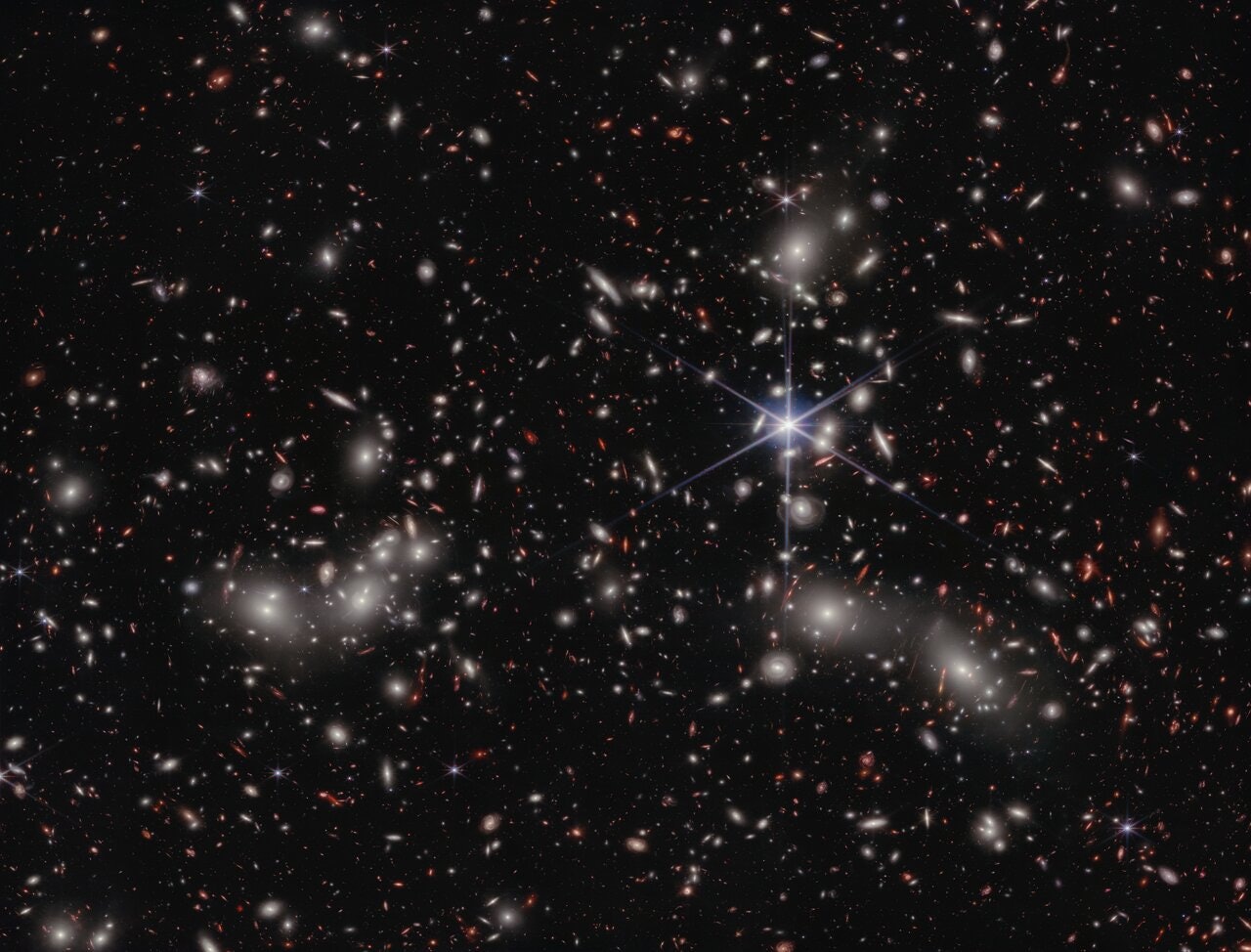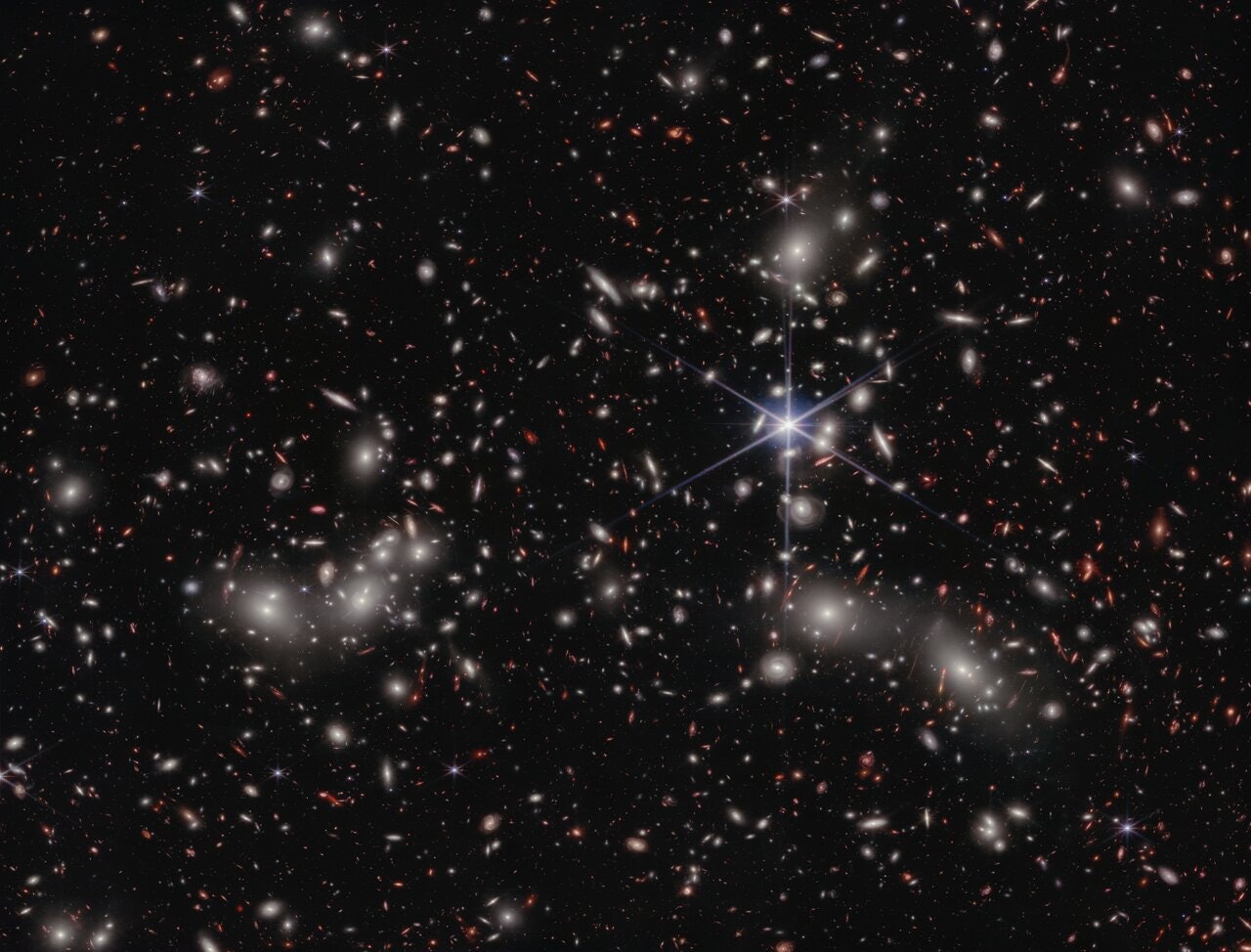
Four billion light years away, three galaxy clusters are inexorably crashing together to form one gargantuan “megacluster,” and it’s so massive that it warps the space and time around itself.
Light from distant galaxies on the far side of Pandora’s Cluster follows the warped curve of spacetime around the cluster, converging again on the near side. And the result is something like a magnifying glass on an almost incomprehensibly huge scale.

Astronomers can use the megacluster’s cool physics trick, called gravitational lensing, to get a closer look at some of the most distant galaxies in the universe. If you want to see some examples, look for the faint, reddish, thin arcs around the brighter lights of one galaxy cluster in the lower right part of the image. Those represent the light of hundreds of even more distant galaxies, magnified but also warped by the Pandora Cluster’s gravity.
You can spot lots of other gravitationally lensed galaxies in the image: just look for galaxies that seem to be stretched or curved, or that seem to repeat in an arc around one Pandora’s lensing clusters. If you’re counting, there are about 50,000 total light sources in the image, although not all of them are lensed galaxies; some are distant galaxies that JWST’s instruments captured without help from Pandora’s lenses, and some are the Pandora Cluster galaxies themselves.
The Pandora Cluster, formally known as Abell 2744, is still in the process of merging into a megacluster. In the meantime, it’s actually got several “lensing cores,” or areas where enough mass is gathered to create a gravitational lens. The Hubble Space Telescope has previously given astronomers a detailed look at the central lensing core, but the rest haven’t been studied in detail. And the one on the lower right has never been imaged before at all.
Astronomers on the Ultradeep NIRSpec and NIRCam ObserVations before the Epoch of Reionization (UNCOVER) program used JWST’s Near InfraRed Camera (NIRCam) to capture this stunning image. It’s actually four snapshots – each one took about four to six hours – stitched together into a single image.
The UNCOVER team plans to comb through all the distant, lensed galaxies in JWST’s latest deep-field image. They’ll choose several of them for a more detailed look with JWST’s Near InfraRed Spectrometer (NIRSpec) instrument, which won’t produce a pretty picture but will help astronomers measure the distance to the far-away galaxies and understand what chemical elements they’re made of.







